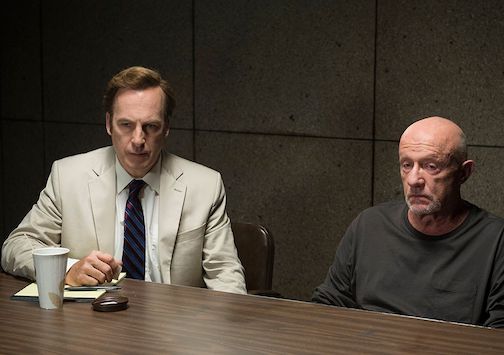Karl Ove Knausgaard’s My Struggle, a portrait of our collective existence…..

by: Michael Shields
My childhood wasn’t unique in the grand scheme of things. Undoubtedly, there were amplified moments, events and occurrences that affected me deeply, highlights that protrude amongst the foggy cavalcade of memories. Moments in time that seemed bigger, surreal, and acutely significant at the time. But, so many of those instances have been consumed as the bigger picture that is life came into focus, and their significance pondered far too infrequently. I can’t help wishing I remembered more. Even the more mundane moments. Especially those. I wish that I was more conscious, more aware. That I was able to look back and decipher the effects and the value of the day’s past. Luckily, a brilliant and insightful Norwegian author possess this competence, and has shared his findings for all to revel in.
Addictive. Consuming. Engrossing. Absorbing. All words I could easily employ to describe the series of six autobiographical books by Karl Ove Knausgard, entitled My Struggle. Once you begin to read his words, it’s near impossible to stop, as what envelops you is a stunning portrait of one man’s life. A life of growth and of loss, of what being alive really means, and of present day, in that My Struggle and the ensuing novels forever trap time in a bottle, resulting in an all-encompassing view of modern civilization.
Mr. Knausgaard has persistently held the literary world within the palm of his hand since the first book of his 3,600 page, six part autobiographical novel, My Struggle, was translated and released in English in 2012 ((Combined American sales in the United States, in all formats, are about 50,000)). Bibliophiles, authors and critics alike have been mesmerized, appropriately singing the praises of Knausgaard’s prolonged memoir. Two subsequent books have been translated, with three more promised.
Themes are readily apparent and can be deciphered within each book. Book 1, “A Death in the Family,” drops us squarely in the fallout of the death of Mr. Knausgaard’s estranged, alcoholic father: a guarded and ultimately uncaring man who abandoned Knausgaard while he was a teenager. Book 2, “A Man in Love,” begins to delve into Knausgaard as a father, the primary caregiver to his children and his struggles to write within this structure. And in Book 3, “Boyhood Island,” we are rebounded back to his childhood, a companion piece to Book 1, where many of the more prominent and unanswered questions that lingered from his initial book are re-examined and expounded upon.
Unflinching and honest, Knausgaard’s novels shine a light on life’s minutia, the in’s and out’s, and the banal grind of existence. Yet embedded within these tales of youth resides a deep-rooted level of insight which borders on astounding. Profound meditations on hurt, aspirations, music and art balance Knausgaard’s novels out, allowing them to be far more than a recounting of one’s life. And propelling them towards dissertations on the more abstract and complex facets of existance.
Knausgaard draws us deeply into every facet of his life, from his daily routines and subsequent philosophical reflections upon them, to the defining, weightier moments of being alive. While often tedious, these are the ingredients to life, and Knausgaard doesn’t shy away from a second of it. His experiences aren’t unique, for they happen to us all in one way or another, and his musings, whatever the topic, play like poetry.
Hastily, one could criticize Knausgaard’s novels as ordinary, as far too simplistic and focusing roguishly on the granular details of everyday life. And objections such as these would be evidence of missing the point entirely. As life is far more than what meets the eye. So much understanding can be found in life’s daily pursuit, even when that pursuit may seem commonplace, even trivial. The essence of life lies veiled in every hour of every day. The roses are right there in front of us. It is up to us to lean over and inhale.
I often look at my three year old daughter, at the way in which she sees the world. The whimsy in which she confronts her daily undertakings, and the curiosity with all that surrounds. Knausgaard somehow captures this wonder, this childishness. Remarkably, he has unearthed a way to tap into the thoughts and feelings of his formative years, the time when his whole life was in front of him. Through this puerile lens, we view an enchantment with his surroundings, where everything is a novelty, and where this fascination leads to attempts to make sense out of the chaos he is steeped in. And it is this childlike journey towards understand where Knausgaard sets himself apart, establishing My Struggle as a distinguished and unique piece of art.
Now that these novels has opened my eyes, they have allowed me to live my days more in the moment. And I sometimes think, even whilst simply walking to the grocery store, hand and hand with my daughter – that Knausgaard could write 100 pages on this excursion easy ((In one particularly carefully crafted section of My Struggle, Knausgaard utilizes around 70 pages to discuss preparing to get drunk at a New Years Eve Party.)), and lace it with enlightening thoughts that would resonate within me for years to come. What we find within the meticulously crafted pages of My Struggle and the subsequent two novels available, is the comprehensive portrait of one man’s entire life. And in that, we can easily see a reflection of ourselves. The reminiscing, and soul-searching, invoked during my binge reading sessions was considerable, and wholly rewarding. Worldly truths remain at the core of Knausgaard’s tales, the purpose in fact. And this fanatical inclusiveness, paired with a simplistic yet esoteric stylings, makes Knausgaard’s novels some of the more compelling reads you will will ever happen upon.





